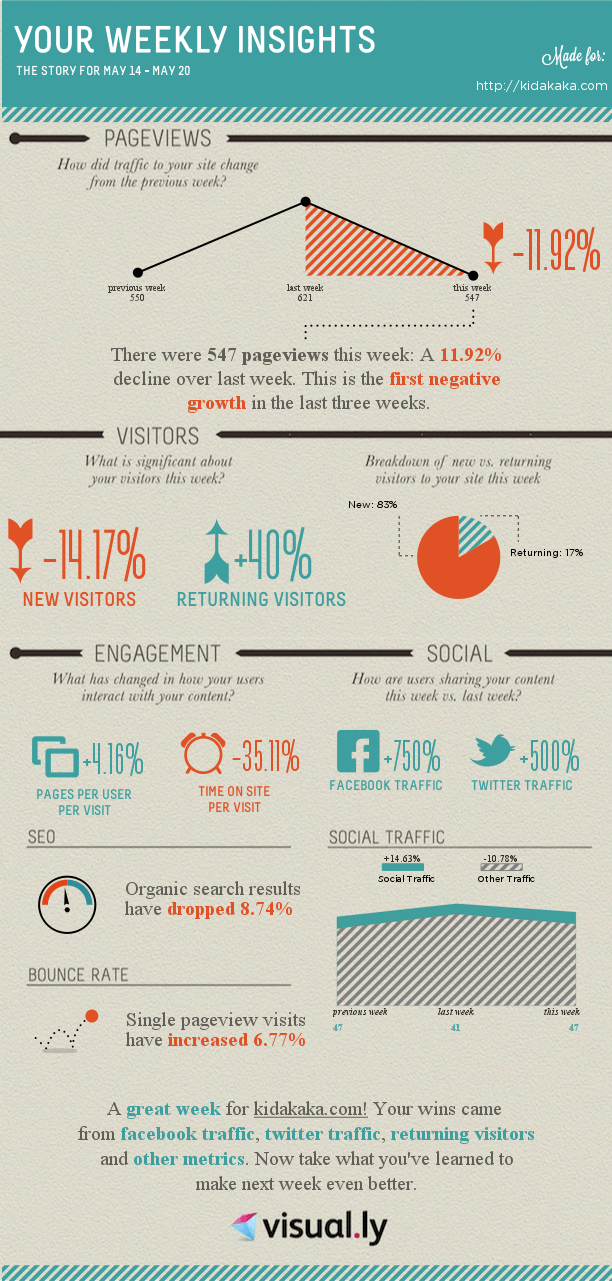So after toiling on that idea for more than 4 to 5 months, you have finally launched your site … the journey till here was literally blood and tears. Having to either grapple with the content management system (CMS) or even worse, having to convince the developers working on your site that the site needs to be exactly as the way you want it to be and not what they want it to be. You have managed to stick to the deadline that you set for yourself and finally the site is live!
You feel like celebrating … and you should. Fireworks in the sky, Champagne flowing … you have did it. It feels good to have reached here, doesn’t it?
Reality bites
Now time for a reality check.
Your site’s journey has just started, and its completion is not the end, but just the start. You still need traffic to generate revenues, you need growth in that traffic and you need people to talk about your site. Without traffic and sustainable growth in that traffic, your site is simply going to be a liability. If you are betting your website to do your sales, then have I got a thing (or two) to say to you!
A website once built, can only generate huge traffic if you are relying on the secret sauce. That ingredient which will ensure that thousands and thousands of potential customers come flocking to your website looking to buy your product/service.
The Secret Sauce
To generate traffic, you need to be organized. You need to try out different things to see what works, and then do more of that.
 Yes. It’s that simple. You need to experiment and see what works for you. This is more work than you actually thought, but trust me … if you like the reason why you started the site, you will love promoting your site! You would love it even more when people reach out to you and seek your help.
Yes. It’s that simple. You need to experiment and see what works for you. This is more work than you actually thought, but trust me … if you like the reason why you started the site, you will love promoting your site! You would love it even more when people reach out to you and seek your help.
If you can Measure, you can Scale
The more help you offer to the good folks who visit your website, the more popular would be. Since people actually start feeling your website useful. It’s a matter of finding out where these people come from and trying to see if you can get more people to visit your site from there. This is easier said than done … and that’s why you need to follow these tips and get to point where you can start doing these experiments.
So buckle up Dorothy, coz Texas is going bye, bye!
To correctly measure the traffic on your websites, you need to have a couple of things setup.
1. Google Analytics (GA)

I would suggest GA because of the ease with which you can generate insightful reports and also the enterprise class features you get to use for free. There are other alternatives to GA such as Clicky, Omniture and even Alexa for that matter. However, trust me and go with Google! We will save Alexa hacking for later.
2. Google Webmaster Tools (GWT)

Using GWT and GA in tandem would be the backbone of your Search Engine Optimization (SEO) operations. I have put up a Starter’s guide for SEO which you definitely need to go through. In case if Bing (Bing Is Not Google) search engine is relatively well known in your country (it’s at 16% market share as we speak in the United States), then go ahead and register on Bing Webmaster Tools (BWT) as well.
3. Start re-writing your content

I know. You have just completed this task two days back. Life is unfair, I should have told you about this before you finished the site! But in reality, be prepared to keep fine tuning the content on your website on a regular basis. I keep doing this for my top content since the post might be old, but the traffic that comes to those posts is brand new!! Do not be afraid or lazy to re-visit the content on your site. It’s a given that you will revisit it. Embracing this helps you quickly write content better for your users and also for your search engines. Here’s a starters guide to writing for search engines using Schemas.
4. You are your website
Remember, at the start. People do not know of your website. Do not expect too many visitors from the word go. In fact you probably will have to ask your friends to visit your website. So start sharing your website link with people … share it with people whom you think will benefit from the advise you are giving on the website. Share it on your social networks asking your friends to visit the site and give you reviews.
You have to pimp out that site and in style! Use your personal equity and get the traffic rolling in … if the site is good, then soon your friends and contacts will start sharing your site without being asked to! The traffic to your site will slowly grow … but at the start, you are your website. It’s a part of you and you have to ask people to come and visit your digital presence … your website. Do not shy away from this. You would be losing out on a very good initial source of traffic if you are shying away from sharing your site on your own social networks.
Are you yourself not convinced about the content you are dishing out on the site? No? Then start sharing those URLs. Have a few social sharing widgets on your site and ask your good friends to share as well!
5. Prepare for the journey ahead

I have already said this before, but I am going to iterate this again and again until this really sinks in.
Driving traffic to your website is a continuous activity.
This does not mean that you need to stop everything else and only keep doing these things. But, this means that you need to allocate some time in your busy week for Measurements and Experiments. You need to play with your website, and see what different things you can do on your site.
If that means learning HTML or hiring a smart guy to do this work, then so be it. It will pay off in the longer run. Also, do note that if you shy away from this activity and rely on someone else to do this for you, then you are pretty much relying on that person for your traffic and the traffic will dwindle the minute he/she goes away.
So pull up your socks, and get ready for a wonderful journey of web analysis, traffic generation and customer engagement! You are going to love it!!










 This move gives the power back to the people, instead of focusing on complex discussions such as Information Architecture, Content Taxonomy, Tagging and Keyword Optimization, you just have to worry about one thing, and one thing only. Good quality original content!
This move gives the power back to the people, instead of focusing on complex discussions such as Information Architecture, Content Taxonomy, Tagging and Keyword Optimization, you just have to worry about one thing, and one thing only. Good quality original content!


